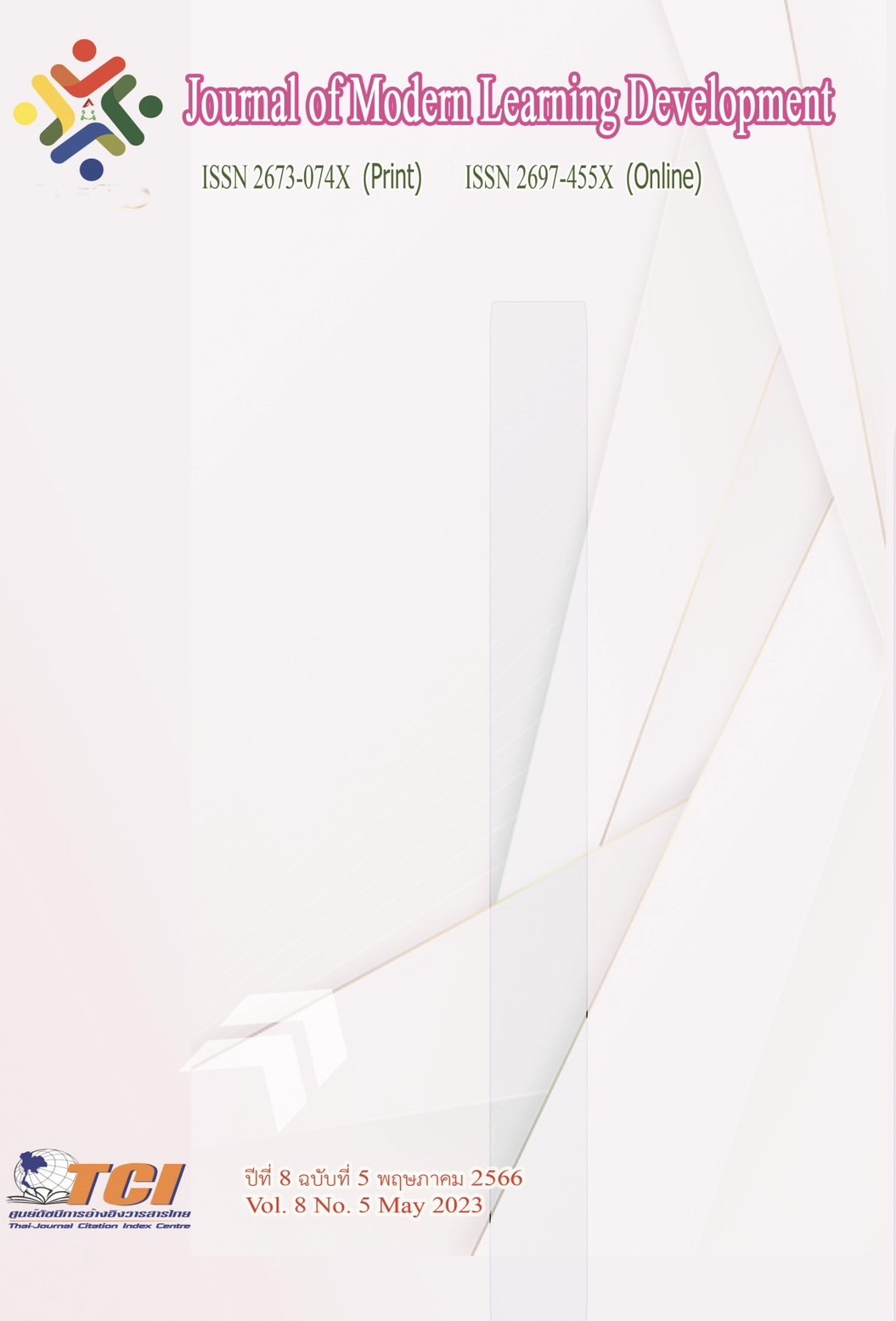A Causal Relationship Model of Technology Acceptance of Teachers’ Online Teaching during the Covid-19 Pandemic
Main Article Content
Abstract
During the COVID-19 pandemic, school teachers changed their courses from traditional face-to-face to online teaching. They applied online meeting applications such as Zoom Cloud Meetings, Google Hangouts Meet, and Line for online teaching. However, these applications did not design for online classroom learning. We have the main question on teachers’ intention to use meeting applications for online teaching based on an analysis of the Technology Acceptance Model (TAM). Thus, this study aims to develop and evaluate the causal relationship model of Thai teachers’ technology acceptance of online teaching. The current research consisted of 300 teachers who are teaching at the school of Krungthepmahanakorn education department in Bangkok using multi-stage random sampling. An online survey used TAM as a research framework. As a particular type of structural equation modeling, path analysis was employed as the primary analysis method in this study.
The following were the results: 1. The results supported the hypotheses and found a consistency with empirical data at the statistical level p< .05 which consisted of Chi-Square = 22.88, df = 15, p = 0.09, GFI = 0.98, AGFI = 0.96, RMSEA = 0.03 and SRMR = 0.03. 2. Teachers’ Perceived Ease of Use (PEU) has a significant and positive influence on their Perceived Usefulness (PU) and Intention to use (ITU), but PU did not significantly influence ITU.
Article Details
References
จิรากานต์ อ่อนซาผิว และ สุชาดา นันนทะไชย. (2564). ปัญหาและความต้องการของการจัดการเรียนรู้ในช่วงสถานการณ์โควิด 19 โรงเรียนวัดด่านสำโรง สำนักงานเขตพื้นที่การศึกษาประถมศึกษา สมุทรปราการเขต 1. Journal of Modern Learning Development. 6 (4), 49-66.
นิตยา มณีวงศ์. (2564). ศึกษาพฤติกรรมและปัจจัยความสำเร็จการเรียนออนไลน์ แอปพลิเคชันไลน์ ในช่วงวิกฤต COVID 19. วารสารครุศาสตร์สาร. 15 (1), 161-173.
พูลพงศ์ สุขสว่าง. (2563). โมเดลสมการโครงสร้าง (Structural equation modeling). (พิมพ์ครั้งที่ 3). ชลบุรี: เอ.พี.บลูปริ้นท์.
สำนักการศึกษา กรุงเทพมหานคร. (2565). รายงานสถิติการศึกษา ปีการศึกษา 2564 โรงเรียนสังกัดกรุงเทพมหานคร. ออนไลน์. สืบค้นวันที่ 15 มกราคม 2565. แหล่งที่มา: https://webportal. bangkok.go.th/bangkokeducation
สุทิพย์ ประทุมและสรัญณี อุเส็นยาง. (2565). การยอมรับเทคโนโลยีสารสนเทศในยุควิถีชีวิตใหม่. วารสารลวะศรี. 6 (1), 1-18.
สุวิมล มธุรส. (2564). การจัดการศึกษาในระบบออนไลน์ในยุค NEW NORMAL COVID-19. Rajapark Journal. 15 (40), 33-42.
อริย์ธัช สมโชคและวิษณุสุทธิวรรณ. (2564). การศึกษาสภาพการจัดการเรียนรู้ออนไลน์ของนักเรียนชั้นประถมศึกษาปีที่ 6 โรงเรียนวัดดอนเมือง (ทหารอากาศอุทิศ). Journal of Modern Learning Development. 6 (5), 194-208.


